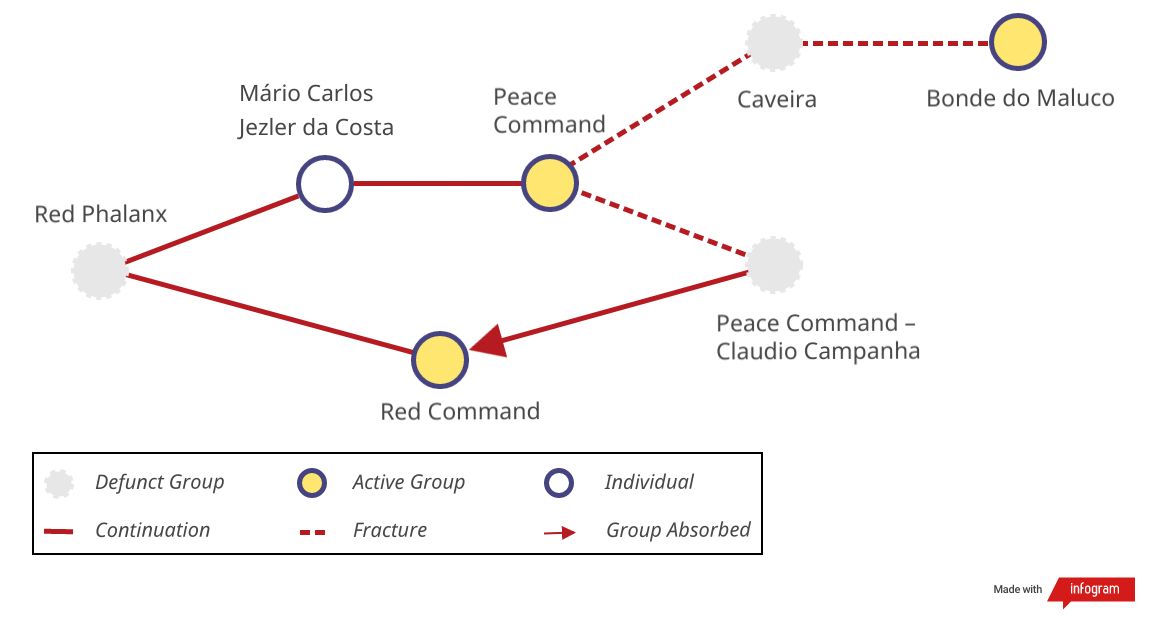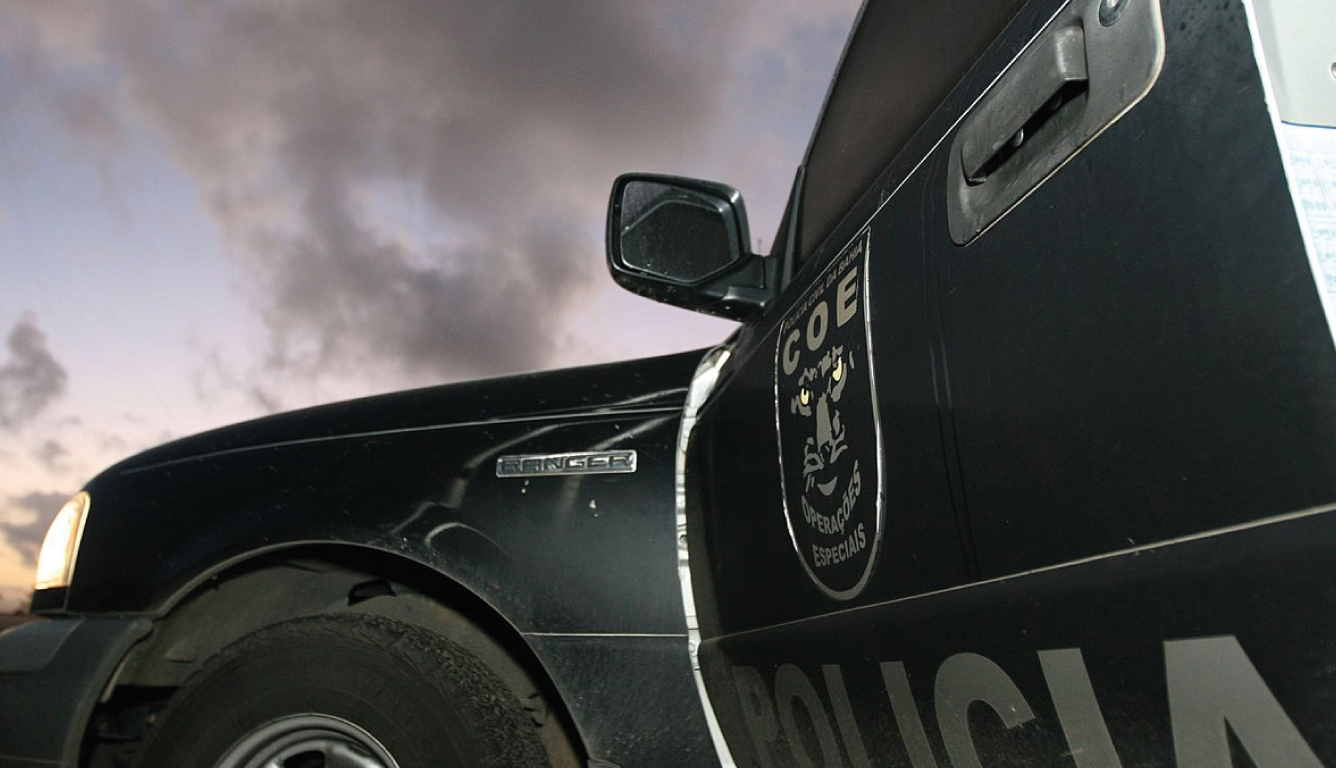Rival criminal factions are targeting civilians as they battle for territorial control across Brazil’s northeastern state of Bahia, with a heavy-handed government response further exacerbating the violence.
With nearly 1,700 reported deaths at the hands of organized crime and police, Bahia has suffered some of the deadliest organized violence of any of Brazil’s 26 states so far this year, according to new data collected by the Armed Conflict Location & Event Data Project (ACLED) and shared exclusively with InSight Crime.
The violence has become so frequent in parts of Salvador, the state capital, that residents have been forced to put daily life on hold.
Reported Fatalities Involving Gangs and Authorities in Brazil
Total reported fatalities for Jan-Nov 2023
“Some areas of the city were paralyzed, including schools, health centers and buses – public transport not running in certain areas at certain times as a result of these conflicts,” Gabriela Ashanti, project manager at the Odara Institute, a Bahia-based anti-discrimination and anti-violence organization, told InSight Crime.
To find out what is behind the outbreak of violence in Bahia, InSight Crime and ACLED analyzed the exclusive new dataset, which illustrates the role of organized crime dynamics and the government’s response to the killings.
Fighting Fire With Fire
There are two primary factors driving violence in Bahia: criminal factions fighting to control local drug markets and the militarized state response.
Bahia suffers from extreme poverty concentrated in peripheral neighborhoods of urban centers and rural areas of the interior, creating vulnerable populations that can be exploited for recruitment. But it also features centers of wealth – especially Salvador, where there is strong demand for drugs.
The most active criminal groups in Bahia are the Rio de Janeiro-based Red Command (Comando Vermelho – CV) and the local Bonde do Maluco (BDM), which has allied with Brazil’s most powerful crime group, the First Capital Command (Primeiro Comando da Capital – PCC).
SEE ALSO: First Capital Command – PCC
The rivalry between the two groups has driven much of the violence seen this year. Gangs and militias have been involved in 86% of all recorded violence so far in 2023, according to the data compiled by ACLED. The two groups clashed at least 40 times throughout the year, but the ACLED data found the CV was the most active, participating in an average of 16 violent incidents per month, which resulted in at least 194 total reported deaths.
At the same time, nearly half of the organized crime-related violence involved confrontations between gangs and police forces. As in other parts of Brazil, the government has responded to criminal violence with brutal tactics of its own, particularly involving the military police.
Number of Reported Fatalities in Violent Incidents Involving the Military Police
Total reported fatalities for Jan-Nov 2023
The police strategy of confronting the gangs head-on has been deadly. Bahia has logged more deaths involving the military police than anywhere else in the country, with 752 people killed in 662 violent incidents from January through November.
The violence has been concentrated in Salvador, where most of the state’s wealth is concentrated. Well-off areas border poor neighborhoods, placing consumer markets near areas where there is little state control. But though it is often the richest neighborhoods where drugs are seized, they are not the areas most affected by violence.
SEE ALSO: Crime Groups Drive Pre-Election Violence in Mexico, Brazil: Study
“Pituba, which is considered a wealthy neighborhood here in Salvador, is the neighborhood with the highest number of drug seizures,” said Ashanti. “However, it is Nordeste de Amaralina, which is next door to Pituba, but which is a peripheral neighborhood with a majority black population, that suffers constant police raids.”
Salvador accounts for over half of the violent incidents involving Military Police in Bahia this year, according to ACLED’s data. Violence peaked in September, when almost 70 lives were lost in a single week. Nearly two-thirds of the recorded fatalities occurred during shootouts between gangs and police. Of the 146 events recorded by ACLED in which someone was killed in September, 70 were shootouts between gangs and police, while 61 involved gangs killing civilians.
Weekly Reported Fatalities in Bahia Brazil
Number of people reportedly killed during clashes involving gangs and/or police
By violently attacking gangs, police often only achieve partial victories, according to experts consulted by InSight Crime. Removing top leaders or a wing of a group can cause it to split into several rival factions, ultimately doing little to wrestle territorial control away from criminal gangs or shrink their profits.
“There has never been another strategy against the factions to tackle the drug problem. And I think this is a fundamental mistake in the field of public security,” said Ashanti.
Fractures, Alliances Complicate Anti-Crime Fight
As the government continues clashing with local groups fighting for territorial control, the growing fragmentation of Bahia’s underworld has sparked a rapid criminal evolution that is further complicating the fight against organized crime.
ACLED identified 14 distinct criminal groups active this year, and there is an unknown number of smaller, unnamed groups also now present throughout the state.
“All of Bahia’s municipalities, all of the capital metropolitan region and the interior, are all under the control of criminal organizations,” said Antonio Lima, a sociologist at the Federal University of Bahia.
The Evolution of Bahia’s Factions
Though prison gangs and other criminal groups have existed in Bahia for decades, most of the factions fighting today trace back to one group: the Peace Command.

Furthermore, national groups have increased their activity and support to allies in Bahia. Since the CV absorbed a local gang in 2021, the Rio-based group has become increasingly violent in Bahia, according to ACLED’s data. Faced with a growing rival, the BDM have forged additional alliances. Local media reported that beginning in April, the BDM combined forces with the CV’s main rival in Rio de Janeiro, a splinter faction known as the Pure Third Command (Terceiro Comando Puro – TCP).
Brazil’s biggest gangs may be looking to Bahia in an attempt to secure international trafficking routes. Salvador is an Atlantic port city and has seen several major seizures of drug shipments headed to Europe in recent years. In 2022, Brazilian authorities arrested 12 people in Bahia and São Paulo who were alleged to have hidden cocaine in shipping containers from Salvador to Europe. Authorities also seized over 3.5 metric tons of cocaine in the operation.
But while these shifting alliances have led to a spike in violence across large parts of Bahia, some areas dominated by a single group are becoming less violent. These drops in violence stem from when one group has almost complete control over trafficking, according to Lima.

